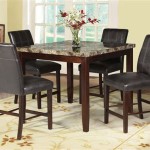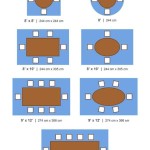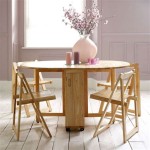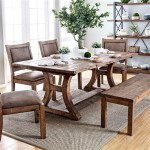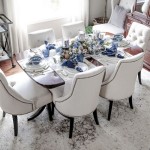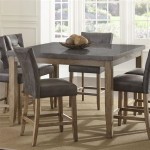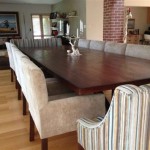Antique Mahogany Dining Room Tables: A Timeless Centerpiece
Antique mahogany dining room tables represent a significant investment in both functionality and aesthetic appeal. Their durability, rich color, and historical significance make them a sought-after addition to discerning homes. Understanding their characteristics, value determinants, and proper care is crucial for anyone considering acquiring or already owning such a piece.
Identifying Genuine Antique Mahogany
The term "antique" generally applies to items that are at least 100 years old. Determining the authenticity of a mahogany dining table involves careful examination of several key features. The type of mahogany used is a primary indicator. True antique mahogany tables are usually constructed from Cuban mahogany (Swietenia mahagoni), Honduran mahogany (Swietenia macrophylla), or, less commonly, Santo Domingan mahogany (Swietenia mahogany). Cuban mahogany, characterized by its tight grain and deep reddish-brown color, is the most prized but is now exceedingly rare due to over-harvesting. Honduran mahogany, while also valuable, tends to be lighter in color and has a slightly coarser grain. Santo Domingan mahogany falls somewhere in between these two in terms of appearance and quality.
Visual examination is the first step. Examine the grain pattern closely. Authentic mahogany exhibits a tight, uniform grain, often with a ribbon-like or flame-like figure. Look for variations in color; natural mahogany will exhibit subtle shifts in tone, unlike modern stained woods which often appear uniform. The presence of sapwood (the lighter-colored wood beneath the bark) is also a common feature in older pieces as manufacturers often used the entire log to minimize waste. However, sophisticated furniture makers would use these parts in areas that would not be visible, especially in high-end pieces.
Construction techniques provide further clues. Pre-industrial joinery methods, such as dovetailing, mortise-and-tenon joints, and hand-planing marks, are strong indicators of age. The use of screws is not necessarily a disqualifier for a table to be considered antique, as screws were used in furniture making since the 17th century. However, the type of screw used is important. Hand-forged screws, characterized by their irregular threads and blunt tips, are indicative of an older piece. Machine-made screws, with their uniform threads and pointed tips, suggest a later manufacture date. Look for evidence of hand craftsmanship throughout the table. Unevenness in the surface, slight imperfections in the carving, and subtle variations in the joinery are all signs of hand work.
Hardware, such as hinges, locks, and drawer pulls, can also provide valuable information. Antique hardware is often made of brass or iron and may exhibit signs of wear and patina consistent with age. Examine the hardware for markings or stamps from the manufacturer, which can help to narrow down the table's age and origin. The style of the hardware should also be consistent with the supposed period of the table.
Finally, consider the finish. Original finishes on antique mahogany tables are usually shellac or varnish. These finishes tend to darken and crackle over time, creating a characteristic "alligatoring" effect. Be wary of tables that have been stripped and refinished, as this can diminish their value and obscure important evidence of their age and authenticity. The smell of the piece can also be telling. Old wood has a distinctive, musty odor that differs significantly from the smell of new wood or modern finishes.
Factors Affecting Value
The value of an antique mahogany dining room table is influenced by a complex interplay of factors, including its provenance, condition, rarity, and aesthetic appeal. Provenance, or the documented history of ownership, can significantly enhance a table's value. A table with a known connection to a historical figure or a prominent family will typically command a higher price. Documentation such as bills of sale, letters, or photographs can help establish provenance.
Condition is paramount. A table in excellent original condition will be worth considerably more than a table that has been heavily damaged or extensively restored. Look for signs of wear and tear that are consistent with age, such as minor scratches, dents, and fading. However, significant damage, such as cracks, warping, or missing elements, will detract from the table's value. Restoration, if done properly, can improve the appearance and stability of a table, but it can also diminish its value if it is not done sympathetically or if it obscures important historical details. The extent of the restoration, the quality of the materials used, and the skill of the restorer are all important considerations.
Rarity plays a crucial role in determining value. Tables that are unique, unusual, or representative of a particular style or period are typically more valuable than common or mass-produced tables. Consider the design and construction of the table. Tables with intricate carvings, elaborate inlays, or unusual features will generally be more sought after. The size and shape of the table can also affect its value. Larger tables are often more desirable, as they can accommodate more guests. Tables with unusual shapes, such as oval or D-shaped tables, may also be more valuable.
Aesthetic appeal is subjective but nonetheless important. A table that is visually pleasing and fits well with contemporary decor will generally be more valuable than a table that is unattractive or outdated. The color, grain, and finish of the mahogany all contribute to its aesthetic appeal. A table with a rich, warm color and a beautiful grain pattern will be more desirable than a table with a dull, lifeless appearance. The overall design and proportions of the table should also be considered. A well-designed table with balanced proportions will be more visually appealing than a poorly designed or awkwardly proportioned table.
Market trends also influence the value of antique mahogany dining room tables. Demand for antiques fluctuates over time, depending on fashion, economic conditions, and other factors. It is important to stay informed about current market trends and to consult with experienced appraisers or dealers to get an accurate estimate of a table's value.
Care and Maintenance
Proper care and maintenance are essential for preserving the beauty and value of an antique mahogany dining room table. Regular cleaning is important to remove dust and dirt, which can damage the finish over time. Use a soft, lint-free cloth to dust the table regularly. Avoid using harsh chemicals or abrasive cleaners, as these can strip the finish and damage the wood. For more stubborn dirt or grime, use a mild soap solution diluted in water. Apply the solution sparingly with a soft cloth and then wipe the table dry with a clean cloth.
Protecting the finish from scratches and stains is also crucial. Use placemats and coasters to protect the table from spills and condensation. Avoid placing hot dishes directly on the table, as this can damage the finish. If a spill occurs, blot it up immediately with a clean cloth. Do not rub the spill, as this can spread it and make it more difficult to remove. For persistent stains, consult with a professional furniture restorer.
Maintaining the proper humidity level is important for preventing warping and cracking. Mahogany is a hygroscopic material, meaning that it absorbs and releases moisture from the air. If the humidity level is too low, the wood can dry out and crack. If the humidity level is too high, the wood can swell and warp. Aim to maintain a relative humidity level of between 45% and 55% in the room where the table is located. Use a humidifier or dehumidifier as needed to maintain the proper humidity level.
Regular waxing can help to protect the finish and enhance the beauty of the mahogany. Use a high-quality furniture wax specifically designed for antique furniture. Apply the wax sparingly with a soft cloth and then buff it to a shine with a clean cloth. Avoid using waxes that contain silicone, as these can damage the finish over time. Consult with a professional furniture restorer about the best type of wax to use for your specific table.
Finally, it is important to store the table properly if it is not being used. Cover the table with a dust cover to protect it from dust and scratches. Store the table in a cool, dry place away from direct sunlight and extreme temperatures. Avoid storing the table in a damp basement or a hot attic, as these environments can damage the wood and finish.

Double Pedestal Dining Table In Mahogany Leonards New England

Jonathan Charles Buckingham Rectangular Wood Antique Mahogany Dining Table

Mahogany Extending Dining Table Chairs With 2 Leaves Set Of 7 For At Pamono

Dark Mahogany Dining Table With Upholstered Chairs And Cabriole Legs

Vintage Three Pillar Mahogany Dining Table And Chairs 1980s Set Of 15

A Rare High Value Magnificent Vintage Mahogany Set Of 6 Chairs 2 Armchairs 4 Side Without The Dining Table Etsy

Antique Dining Room Table Mahogany Carved Banquet 12 Feet 22024
Two Pedestal Duncan Phyfe Dining Table Gates Antiques Ltd Richmond Va

Antique Victorian Mahogany Pedestal Round Tilt Top Drop Leaf Dining Table Etsy

Antique French Louis Xv Mahogany Round Dining Table

